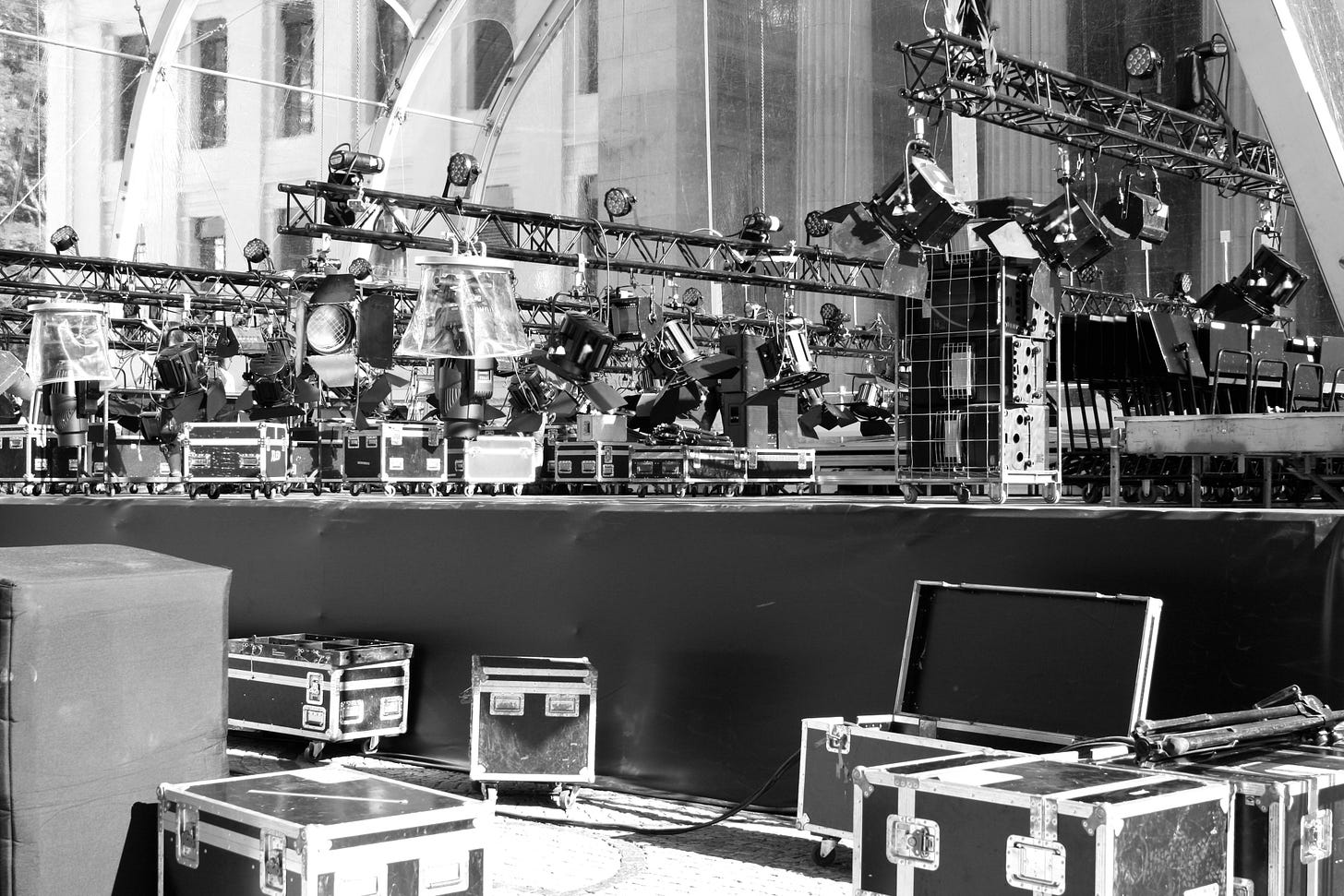When people walk into a live music show, they don’t arrive for the wattage or the par cans. They come for the connection. The spark. The moment where music lifts them out of the ordinary.
But here’s the truth most artists learn the hard way: if your production doesn’t hold up, the magic falls flat.
Or as Bruce Springsteen once put it: “People don’t come to see the lights or the PA system, but if either of those things fails, it’s the only thing they’ll remember.”
The Minimum Standards (No Exceptions)
Whether you’re a solo act, duo, or full band, production is not negotiable. It’s the skeleton holding up your artistry. Without it, your set sounds like a fart in a jar—flat, tinny, and forgettable.
Solo Artist: 2000 watts per side, 2 Par Cans. Stick System or two speakers and a sub.
Duo: 2000 watts per side, 4 Par Cans. Stick System or two speakers and a sub.
Band (up to 300 cap room): 4000 watts per side, 8 Par Cans, two subs, two top boxes.
Why these numbers? Because live music is about feeling. If the audience can’t feel the bass in their chest, can’t see you lit in a way that frames the moment, you’ve missed the opportunity to truly connect.
Why Production Is Not Optional
1. Enhances the Audience Experience
A well-produced show creates immersion. Seamless sound, balanced monitoring, and smart lighting make the audience feel part of something larger. According to a 2023 Eventbrite study, 67% of live music attendees ranked sound and lighting quality as the top factor influencing whether they would return to a venue—above bar prices or ticket costs.
2. Elevates the Performance
The right production takes you from “good” to unforgettable. As Bono once said: “U2 is only U2 because of the sound and the lights. It’s the staging that turns songs into events.” The right mix highlights nuance, power, and energy that gets lost without the proper gear.
3. Ensures Professionalism
Walking into a venue with sloppy sound checks, dodgy speakers, or no lighting tells your audience you didn’t care enough to show up properly. Professionalism in production is respect—for the venue, for the audience, and for your own brand.
4. Makes the Show Memorable
Technical excellence + artistry = memory. That’s the equation. A polished production leaves your crowd buzzing long after the encore, talking not just about what you played but how it felt.
10 Ways to Nail Production (Every Time)
Define clear objectives – What kind of experience are you building?
Thorough planning – No gig is “just a gig.” Plan it like an event.
Select the right team – Skilled operators matter.
Communicate clearly – Keep everyone in the loop, from sound techs to stage crew.
Tech rehearsals – Problems solved before doors open.
Contingency plans – Because cables fail and weather changes.
Engage your audience – Production supports the energy, not just the sound.
Hire professionals when needed – Good production pays for itself.
Prioritise safety – Rigging, power loads, and safe staging save lives.
Evaluate after the show – Debrief, learn, refine.
The Big Picture
Production is not an accessory—it’s the foundation of a viable live music career. Without it, your artistry risks being dismissed as amateur, no matter how good the songs are. With it, you’re not just performing—you’re creating moments people carry with them for life.
So before you step on stage, ask yourself: will they feel it?
Because if they don’t feel it, they won’t remember it. And in this business, memory is everything.
Written by Nichola Burton. I work in partnership with Agents, Artist Managers and Event Producers, who juggle a diverse range of relationships in the Musoverse, to curate, manage and measure data in systems, experience, creative and content to support the entire Musoverse operation in my enterprise A Little Pitchy Copyright 2025



